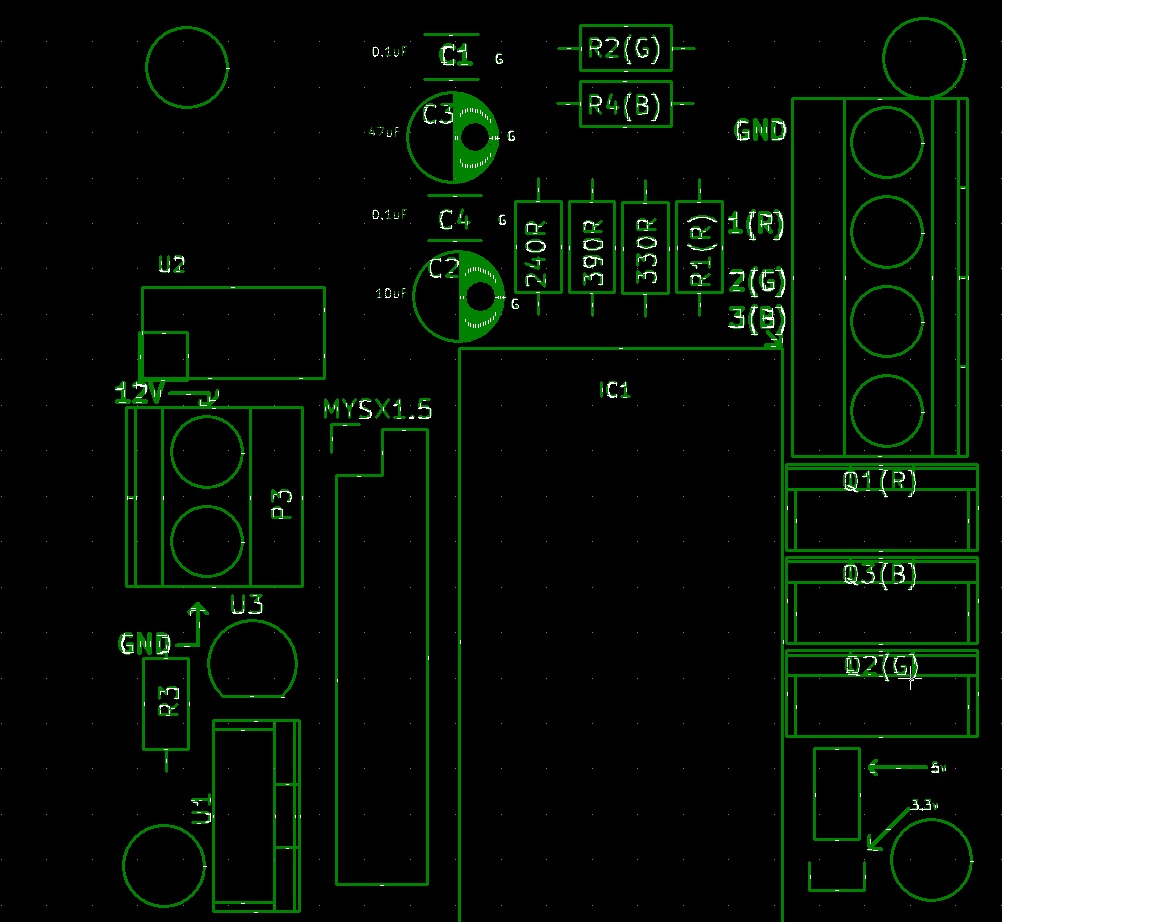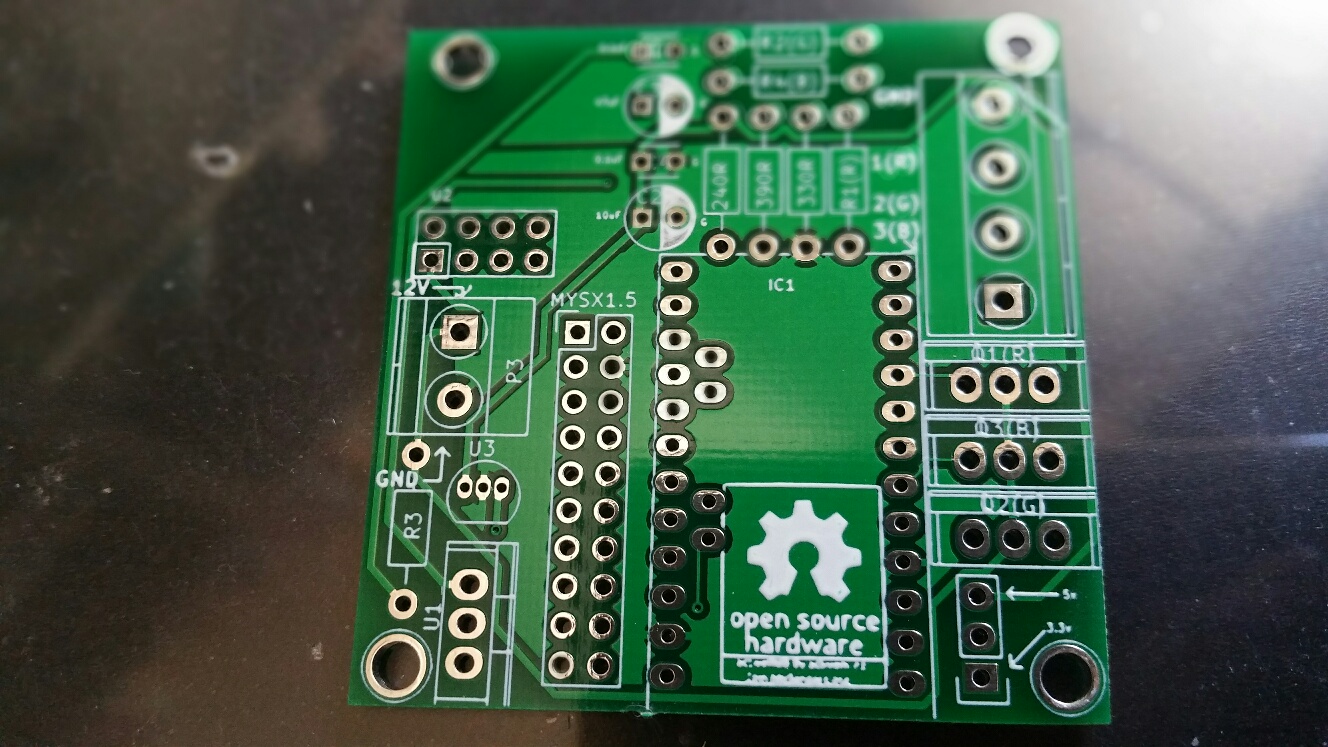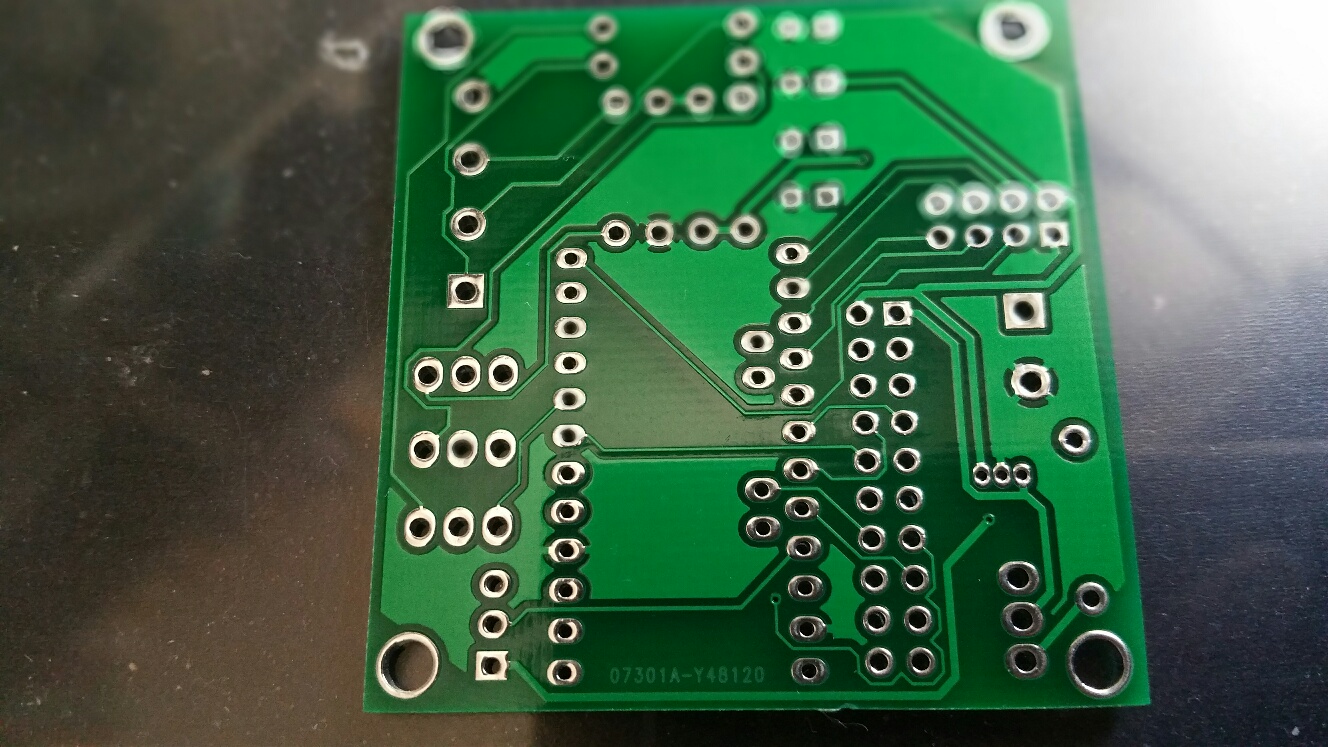Yet Another RGB driver (activeRGB)
-
Looked at the silkscreen file and I had pulled up the wrong file in gerber view. Here is what the correct silkscreen looks like:

-AM
-
Done! Sent the files to Itead for processing :-)
Lets see if the boards work when they come back!
Thanks for all your help @Samuel235 and @scalz
-AM
-
managed to add the OSH and mysensors silkscreen I was thinking. Here is the final silkscreen...

-
Received an update from Itead. Everything looks good in gerber files. They have sent it to fab.
Now the wait starts...
-AM
-
Another update from Itead...PCBs complete and shipped!
Cant wait to get my hands on my first PCB :-)
-AM
-
PCBs are in.... :-)



Time to populate them now and see if they work :-)
-AM
-
Damn! Just realized some of my parts are still not in....
Anyways, looking at the PCB,
- I think some of the text is just too small, like the cap values and OSH silkscreen. I need to make them bigger if I do a next rev.
- The mounting holes are a little too big. This is lightweight PCB and should not need heavyduty M3 screw. I could probably go with smaller mounting holes.
- Some silkscreen on the back would be nice...else it just looks naked :-)
-AM
-
@jeti Thank you. Unfortunately havent had a chance to assemble the boards yet. Have all the parts in but life gets in the way :-)
-AM
-
@jeti Thank you. Unfortunately havent had a chance to assemble the boards yet. Have all the parts in but life gets in the way :-)
-AM
@activemind
do you already have a BOM? and is there chance to help you out? I would be willing to assemble one or two of the boards :bowtie:
